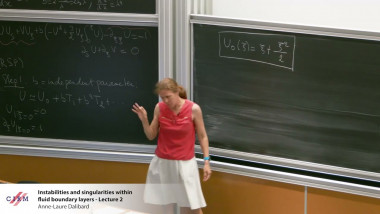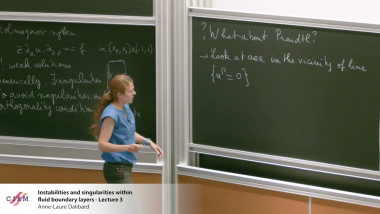
Instabilities and singularities within fluid boundary layers - lecture 2
By Anne-Laure Dalibard

Instabilities and singularities within fluid boundary layers - lecture 3
By Anne-Laure Dalibard
Appears in collection : LEM2I international conference / Colloque international du LEM2I
In this talk, I will focus on a Fokker-Planck equation modeling interacting neurons in a network where each neuron is governed by an Integrate and Fire dynamic type. When the network is excitatory, neurons that discharge, instantaneously increased the membrane potential of the neurons of the network with a speed which is proportional to the amplitude of the global activity of the network. The self-excitable nature of these neurons in the case of excitatory networks leads to phenomena of blow-up, once the proportion of neurons that are close to their action potential is too high. In this talk, we are interested in understanding the regimes where solutions globally exist. By new methods of entropy and upper-solution, we give criteria where the phenomena of blow-up can not appear and specify, in some cases, the asymptotic behavior of the solution.
integrate-and-fire - neural networks - Fokker-Planck equation - blow-up
